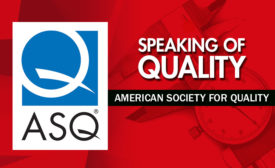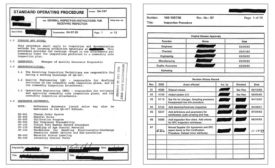Home » Keywords: » management systems
Items Tagged with 'management systems'
ARTICLES
Lean with Lazarus | Ian R. Lazarus
System 1 is satisfied to draw conclusions with limited data, and more often than not, System 2 never bothers to get involved;
Read More
Quality 101
Building Blocks to Improve Organizational Culture
Lay out a road map to achieve organizational excellence and build a culture around it.
May 30, 2023
Why Adopt Risk-Based Thinking?
Automated risk management tools can help manufacturers incorporate risk-based thinking into their processes.
June 3, 2021
Speaking of Quality | Tash Baksh
Facing Change
The best way to approach change is together.
March 5, 2021
Lean ISO Management Systems: How to Create Lean Procedures
The objective is to eliminate or minimize waste within the process without impacting the outcomes.
May 1, 2020
All Together Now: The Benefits of Integrating Management Systems
With the transition from OHSAS 18001 to ISO 45001, it’s easier than ever. But how do you start, and what should you look out for?
August 8, 2019
The Principles of Quality Management
Learn more about these quality basics in order to improve your organization.
April 2, 2019
QUALITY WEB EXCLUSIVE
All About 5S: Definitions and Benefits For Today’s Manufacturers
January 13, 2019
The Future of Management Systems
Let’s look at seven global megatrends that will affect organizations in the coming years.
September 1, 2017
Stay in the know with Quality’s comprehensive coverage of
the manufacturing and metrology industries.
eNewsletter | Website | eMagazine
JOIN TODAY!Copyright ©2025. All Rights Reserved BNP Media.
Design, CMS, Hosting & Web Development :: ePublishing















